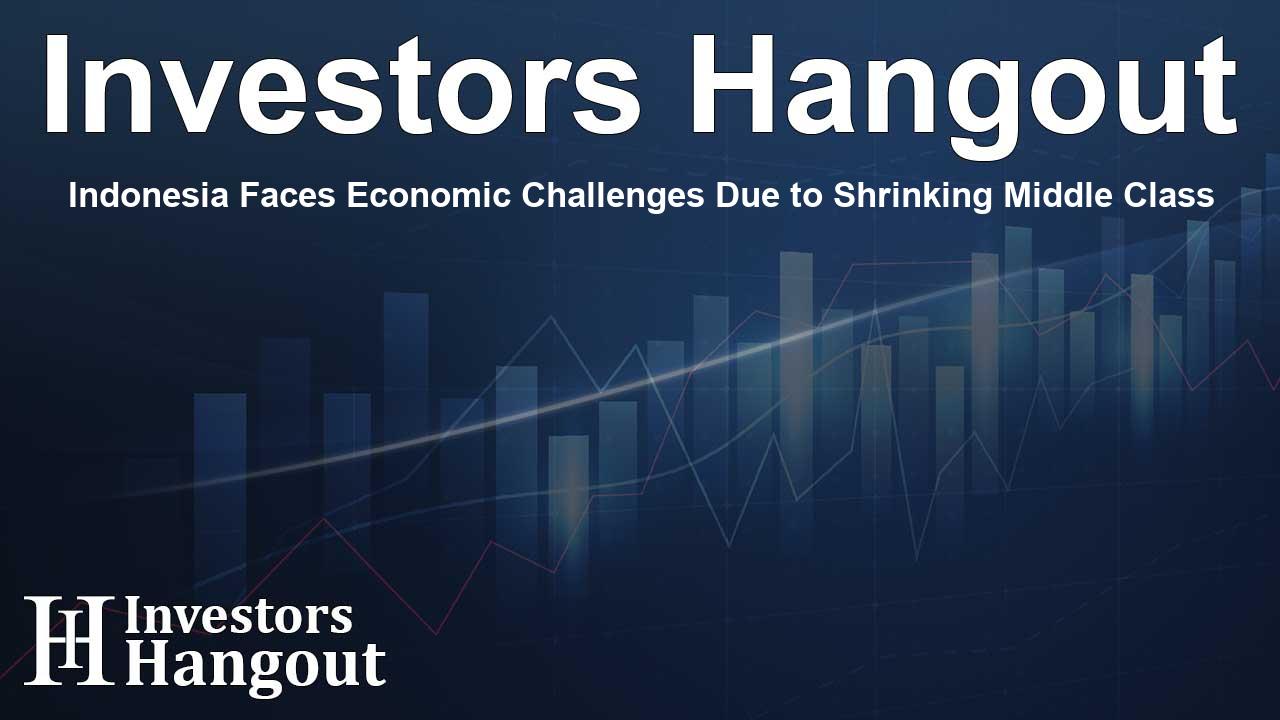Indonesia Faces Economic Challenges Due to Shrinking Middle Class

Indonesia's Economic Landscape: A Shrinking Middle Class
In recent times, Indonesia has witnessed a troubling trend as the middle class dwindles, significantly impacting the economic outlook of the nation. A prime example can be seen in the life of Rahmat Hidayat, a former factory worker who lost his job when his employer shut down, leaving him to turn to selling grilled meatballs for a living. His story is reflective of a larger narrative affecting millions of Indonesians.
The Rising Struggles
Rahmat, now earning less than half of his previous salary, faces dire situations, such as affording his wife's diabetes medication. The drastic changes in employment post-pandemic have pushed many working to middle-class Indonesians into financial distress, causing a surge in poverty levels in the very community that was once thriving.
Impact on Economic Growth
This declining middle class poses a significant challenge to Southeast Asia's largest economy, where household consumption represents more than half of the GDP. The diminishing financial capabilities of this demographic threaten Indonesia's aspirations to evolve into a high-income nation by the year 2045. This situation leads to deeper concerns about the sustainability of economic growth fueled by consumer spending.
Challenges Ahead for Leadership
Newly elected President Prabowo Subianto, who has promised to revitalize the economy and create millions of jobs, will face the enormous task of addressing the challenges presented by an underperforming middle class. As he assumes office, the economic landscape remains precarious with weakened consumption likely to hinder growth efforts.
Consumer Spending and Economic Classifications
The government classifies individuals spending between $132 to $643 monthly as middle class, according to World Bank criteria. This segment is crucial for Indonesia's economy, as their expenditures contribute nearly 40% to private consumption. However, the remainder of the economy feels the pinch as the middle-class share has decreased from 21.5% in 2019 to just 17.1% recently.
The Future Economic Burden
Despite the brief recovery post-pandemic, with growth rates hovering around 5% annually since 2022, the ongoing reduction in the middle class is a worrying sign for Indonesia's economic future. Analysts warn that diminished tax revenues resulting from a reducing consumer base may lead the government to increase subsidies, adding further strain on fiscal policies.
State Spending Solutions
The erosion of the middle class can be significantly attributed to changes in the labor market, particularly in foreign investments targeting less labor-intensive industries like mining. Enhanced technologies utilized in such sectors lead to fewer jobs, exacerbating employment issues.
Government Initiatives
Moving forward, the new administration plans to address these challenges through initiatives aimed at job creation. Plans include the ambitious $28 billion free meals program and the construction of millions of housing units, targeted particularly at micro and small enterprises to help revive economic activity and bolster the middle class.
Personal Stories Amid Economic Strain
As the government's spending capacity may soon face limits due to maturing debts, ordinary citizens like Rahmat and his family continue to struggle. His wife, Fatimah, expresses their painful reality of preparing simple meals like instant noodles instead of their favorite dishes, demonstrating the pressing need for effective economic policies to address these issues.
Conclusion: A National Concern
With the growing economic disparities and the challenges presented to the new leadership, the future of Indonesia's middle class remains uncertain. The initiative to build jobs, create sustainable economic growth, and support struggling families like Rahmat's will be critical in shaping the country's economic trajectory ahead.
Frequently Asked Questions
What are the main reasons behind the shrinking middle class in Indonesia?
The shrinking middle class in Indonesia is primarily due to rising layoffs, a transformation in the job market towards less labor-intensive industries, and increased competition from countries with cheaper labor.
How does the middle class impact Indonesia's economy?
The middle class significantly influences Indonesia's economy as their spending accounts for a considerable portion of household consumption, essential for economic growth.
What steps is the new government taking to support the middle class?
The new government aims to support the middle class by creating millions of jobs through initiatives like the free meals program and housing projects designed to develop small businesses.
What challenges does the incoming administration face?
The incoming administration must confront weak consumption levels, rising unemployment rates, and the need to revitalize an overall sluggish economy.
How has the economic situation impacted ordinary citizens?
Many ordinary citizens, like Rahmat, find it increasingly hard to make ends meet, resorting to alternatives for basic necessities, which highlights the pressing economic issues at hand.
About The Author
Contact Henry Turner privately here. Or send an email with ATTN: Henry Turner as the subject to contact@investorshangout.com.
About Investors Hangout
Investors Hangout is a leading online stock forum for financial discussion and learning, offering a wide range of free tools and resources. It draws in traders of all levels, who exchange market knowledge, investigate trading tactics, and keep an eye on industry developments in real time. Featuring financial articles, stock message boards, quotes, charts, company profiles, and live news updates. Through cooperative learning and a wealth of informational resources, it helps users from novices creating their first portfolios to experts honing their techniques. Join Investors Hangout today: https://investorshangout.com/
The content of this article is based on factual, publicly available information and does not represent legal, financial, or investment advice. Investors Hangout does not offer financial advice, and the author is not a licensed financial advisor. Consult a qualified advisor before making any financial or investment decisions based on this article. This article should not be considered advice to purchase, sell, or hold any securities or other investments. If any of the material provided here is inaccurate, please contact us for corrections.
